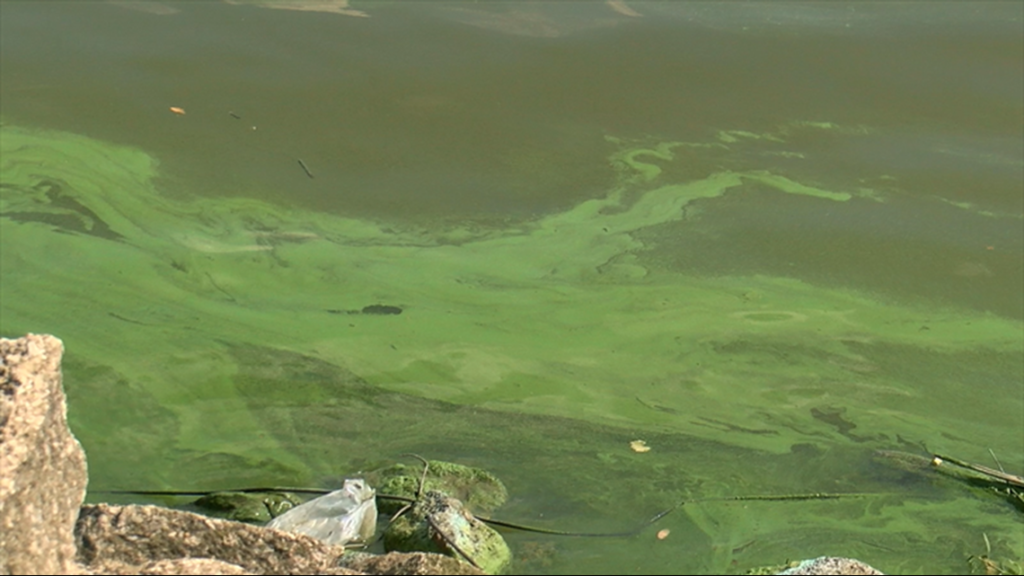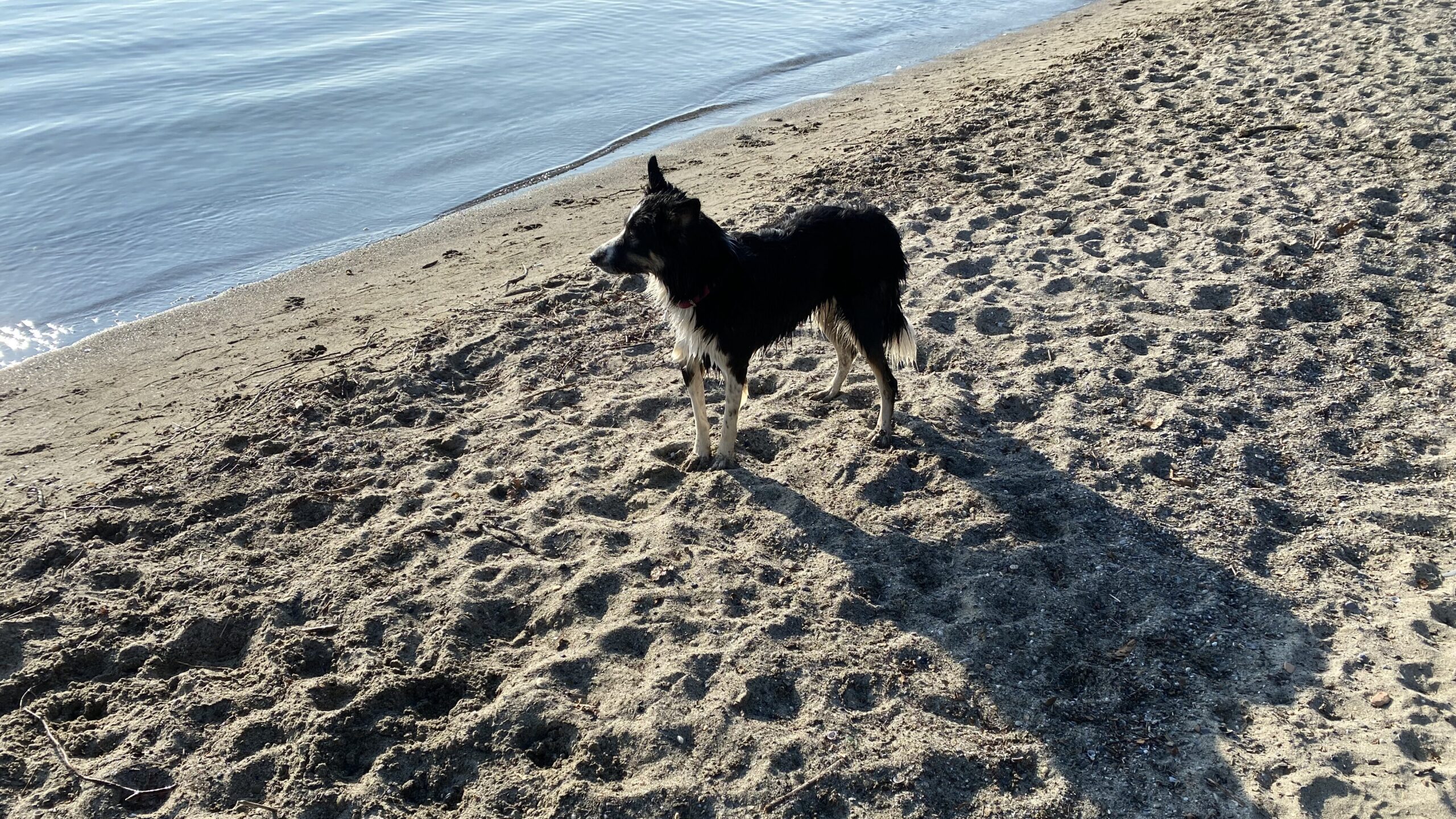What are the dangers for our dogs in lakes?

It’s summertime and the urge to dive into Swiss lakes with your dog is growing. After all, it’s the easiest way to cool off and enjoy some water fun with your four-legged friend. But what do you have to watch out for when it comes to lakes? Here are some answers to that question. Because our lakes are not without danger for our furry friends.
What should I look out for?

First of all, you need to pay attention to the most basic thing: whether your dog swims. That’s the basics, you might say, but there are always owners who think that their dog knows how to swim instinctively. So the first thing to do is to teach him to swim. Don’t forget that if you’re going to a lake or stream that’s in or near a forest, you’ll also need to pay attention to processionary caterpillars.
Beware of cyanobacteria!

Whether it’s in Swiss, French, Belgian or other lakes, there’s one thing it’s imperative to watch out for, the cyanobacteria! This bacterium can kill your dog if he ingests it, even in small quantities.
Cyanobacteria or Blue Algae
Cyanobacteria can become dangerous for fauna and flora when they proliferate in the environment, during algal blooms. They release cyanotoxins that can be fatal to animals and dangerous to humans.
Futura Sciences
Read more
We strongly advise you, especially after a few days of good weather, to check whether or not there is a cyanobacteria alert in the lake before going in, and to look out for any suspicious algae.
In Switzerland, the “Météo Suisse” application Apple / Android can help you with these kinds of alerts.
To date, the best solution is still to keep an eye out. It is possible for an alert to be put up with a simple sign.
Note that cyanobacteria can also develop along watercourses, so it’s important to check carefully before letting your dog into the water to make sure there are no suspicious-coloured “algae” along the banks or on branches near the water.
What should you do if your dog ingests cyanobacteria?
The first thing to do is to wash him and rinse out his mouth immediately with clean water. The second thing is to call the vets!
If in doubt, check that your dog’s behaviour doesn’t change and that his poo doesn’t change colour or consistency. If this is the case, go and see a vet to make sure everything is ok and your dog is out of danger.
Water temperature

Thermal shock can occur if the lake water is colder than the outside temperature. As with us, you need to ensure that your dog enters the water gradually. This will prevent him suffering from thermal shock, or hydrocution, which could be fatal, especially if you’re in the mountains far from everything.
What to do in the event of thermal shock
If your dog suffers from heat shock, it’s essential to cover him up with a survival blanket, for example, and keep him warm so that his body temperature returns to “normal”. Otherwise, he could die.
If you can, go and see a vet as soon as possible so that they can bring your pet’s body to the right temperature and rescue it.
Lake currents
A lake may look peaceful on the surface. However, they have currents that can be treacherous and drag bathers away from the banks. This can also be the case with a dog that is not used to swimming.
There are several things you can do to avoid scares. Firstly, find out about the currents in the lake you are about to swim in or have your dog swim in. If the lake is a natural one, in principle there aren’t too many risks and there should be maps showing the currents.
If this is not the case, or if the lake is artificial, simply staying close to the shore should in principle limit the risks.
There are lifejackets and flotation devices for dogs. It may be worth equipping your four-legged friend if it will reassure you, especially if you plan to go paddling, pedal-boating or any other activity in the middle of the lake with him.
In a nutshell
As with all activities, you need to keep an eye on your dog, whether it’s what he’s doing or where he’s going. Lakes and streams are no exception. You should check beforehand the condition of the lake or waterway in which your dog is going to swim. A lifejacket is strongly recommended, depending on your aquatic activities. And as always, have the number of the emergency vet in the area you’re going to.
Although aquatic activities are not without risk, taking advantage of them is a good thing, especially to prevent your four-legged friend suffering from heatstroke. But beware of the risk of hydrocution in water that’s too cold, such as mountain lakes.
Join us!
- Discord to chat about everything from dogs to video games and everything in between.
- PlayDogs Group to discover in group some beautiful walks.
- Telegram or Whatsapp to discuss and organise outings between members of the PlayDogs group.
- Instagram to see Mia’s day-to-day progress.
- Mastodon the free ad twitter alternative.
- Youtube to see funny videos and some exercises.
- Linktree to have all link in one place.

Comments
Leave a comment